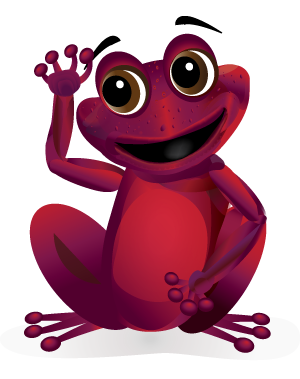 AD
AD
Today is: August 28
Scroll to explore events active on this date.
LEEP INK FEATURES

August? Absolutely!
In August, we live through the Dog Days of Summer. It's hot and often humid, and those who can leave for better climates do. Down south, winter is in full force. August is also known as "the ...

In The Heat of July: July 2025 Events
Is it hot enough (or cold enough if you're below the equator) for you yet? There is actually a day for that! Like every month, I pick a diverse collection of events you may or may not know about. This ...

May Blooms: Events in May 2025
Along with October, May is one of the most densely packed months of the year. It's before the summer humidity and the last whole month of the school year. The weather is warming in t...
About World Wine Box Month
Ends: Sep 30, 2025
DESCRIPTION:
BOXED WINE COMES INTO ITS OWN
INTERNATIONAL BOXED WINE DAY
International Boxed Wine Day celebrates the innovation, environmental benefits, and increasing respectability of boxed wine. It was established in February 2021 by Wine Nook, a company known for designing stylish boxed-wine dispensers, to highlight the convenience, quality, and eco-friendliness of boxed wine packaging.
HISTORY
Packaged wine as we know it—"bag-in-box" or "boxed wine"—was pioneered by Australian vintner Thomas Angove of Renmark, South Australia, who patented the design on April 20, 1964. His innovation featured a polyethylene bladder inside a cardboard box. Two years later, Charles Malpas improved it with a plastic tap for easier pouring. The design was inspired by pre-existing bag-in-box packaging used for battery acid—Yikes!
The concept quickly gained popularity in Australia, and in the 1980s, Franzia, an Australian brand, introduced boxed wine to the U.S. as an affordable, convenient table wine.
DEMOGRAPHICS
While detailed demographics are limited, trends show strong appeal among eco-conscious consumers, casual drinkers, and those seeking convenience or value. Brands like Juliet and Bota Box, with sleek packaging and premium wine inside, are deliberately targeting at-home relaxation and particularly appealing to women.
European markets have seen significant adoption, with countries like Sweden reporting that bag-in-box accounts for nearly 29% of total wine sales. In France, boxed wine makes up around 45% of supermarket wine sales.
A BILLION-DOLLAR INDUSTRY
While long-term yearly data from the 1960s is limited, several sources highlight notable growth:
—Between 2015 and 2019, boxed wine brands outpaced still bottled wine in both value and volume growth.
—Recent data shows boxed wine sales in U.S. off-premise retail reaching approximately $1.6 billion in the $4-plus price tier, up nearly 9% year-over-year.
—Total boxed wine sales in the latest four weeks were about $164 million, reflecting a 4% increase, although volume declined slightly.
—Globally, the wine box packaging market was valued at about $1.11 billion in 2022. It grew at an estimated CAGR of 3.5% from 2015 to 2021.
Annual growth is projected at around 5.1% through 2032, reaching $1.83 billion. The growth of boxed wine continues, driven by rising wine consumption, e-commerce demand, and sustainability concerns.
TOP BRANDS
Franzia is one of the most recognizable boxed wine brands, sold in 3- and 5-liter cartons and known for affordability. Founded in 1906 by Teresa Franzia, the brand is now owned by The Wine Group and remains among the world's top-selling wine brands.
In the U.S., premium boxed wine brands like Black Box (Constellation) and Bota Box (Delicato Family Wines) have driven market interest, with combined sales reaching nearly 14 million cases annually.
BOTTLE VS BOX
Boxed wine is increasingly shedding its "cheap and low-quality" stigma:
—The packaging prevents oxidation after opening, keeping wine fresh for up to six weeks—far longer than typical bottles.
—It offers substantial cost savings—up to 40%—thanks to reduced packaging and logistics.
—The eco-advantages are compelling: reusable cardboard boxes weigh less, cut carbon emissions, and require less manufacturing energy.
Upscale establishments like Merriman's in Hawaii are encouraging high-end wineries to adopt boxed packaging to replace thousands of glass bottles and reduce their carbon footprints.
The emergence of premium boxed wines—by Juliet, Bota Box, Tablas Creek, and others—demonstrates that quality and aesthetic appeal can rival traditional bottles.
However, bottled wine still retains its romantic and traditional allure, and for some connoisseurs, certain varietals and vintages still benefit from traditional bottling.
KEY TAKEAWAYS
INVENTOR: Thomas Angove (1964), Charles Malpas tap (1967)
MARKET GROWTH: Strong growth from 2015 to 2019; $1.6 billion in U.S. sales in the 4-plus dollar tier; global market valued at about $1.1 billion in 2022, projected to reach $1.8 billion by 2032.
DEMOGRAPHICS: Eco-conscious consumers, casual drinkers, women at home; strong European adoption.
TOP BRANDS: Franzia, Black Box, Bota Box.
BENEFITS: Longer freshness, cost savings, eco-friendliness, rising quality and growing prestige.
VIDEOS
SUPPORTING DOCUMENTS
Currently, this event does not have supporting documents.
ADDITIONAL IMAGES
Currently, this event does not have supporting images.
Where would you like to go now?
 AD
AD


/footer-logo.svg)
